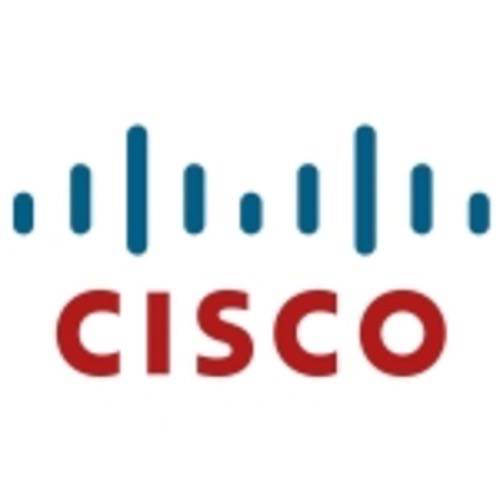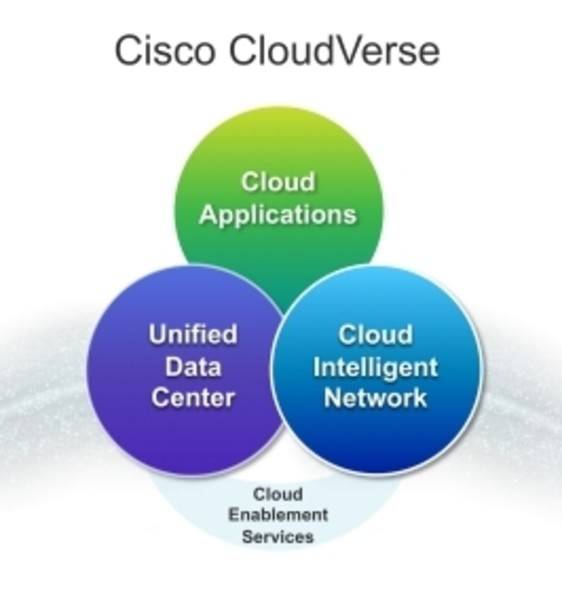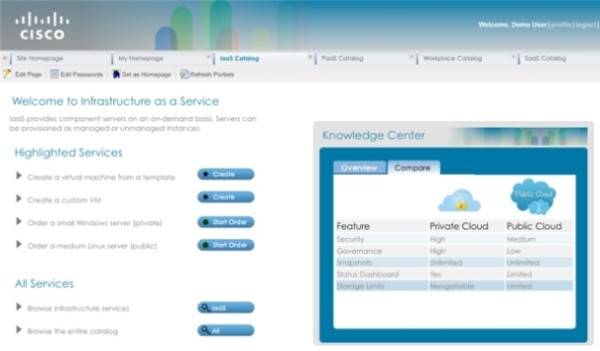Cisco’s history at building brands around consumer-grade devices and services has been not only less than stellar, but a bit below mediocre. It failed to make the most of the Linksys acquisition in 2003; it ended up killing its actually-popular Flip camera last April, then shut down its Eos social platform the following month; and its recent social CRM tool SocialMiner and social collaboration platform Quad have been dwarfed into obscurity this year by Salesforce.com.

So you might think the strategy of marketing enterprise services the way it’s marketed its consumer brands in the past, might warrant at least a moment’s reconsideration. Today, however, Cisco is going forward with a branding campaign for cloud management software and services for cloud service providers (CSPs) to resell to customers or redeploy within an enterprise under its own brand. The clear objective for CloudVerse is for Cisco to maintain its customers within a Cisco cloud corral the way VMware has done with virtualization.
Announced today, CloudVerse is a congregation of existing Cisco technologies, with a few new ones thrown into the mix. It departmentalizes Cisco cloud products into three classes, which it describes as the “traditional pillars of the cloud” (though others’ traditions may vary). Obscuring the branding for just a moment and focusing on concept, Cisco’s three pillars are infrastructure, interconnect, and applications (although you should avoid the temptation to try to parallel these against the various “-aaS” categories).

Infrastructure will be given the collective brand Cisco Unified Data Center, which will incorporate three products known up to know as Unified Fabric, Unified Computing, and Unified Management. Think of “fabric” in this instance as the connections between physical devices, so Cisco’s switches do fall under this class. Unified Computing automates server configurations in order to apportion exactly the image that’s appropriate for hosting a given set of roles. That image may float a single virtual platform. Unified Fabric then provides connectivity between physical processing and storage resources, including NAS; and Unified Management provides admins with the front-ends and tools necessary to provision resources as necessary for the configured servers. Here one has to be careful to distinguish “configuration” from “provisioning;” the former applies to setting up physical hardware, whereas the latter applies to acquiring and releasing virtual resources (such as storage pools or printer queues) on the fly.
Interconnect will go by the name “Cloud Intelligent Network.” You have to be careful here too; whereas competitors use the brand name “intelligent network” to refer to devices, Cisco uses it to refer to protocols delivered by software. Once physical cloud platforms are configured and provisioned, Cisco’s Intelligent Network software and services (unlike any other vendor in the business, you dare not use abbreviations with Cisco) enables integration and cooperation between systems in the delivery of certain classes of services, such as videoconferencing or virtual desktop infrastructure.
So for example, Network Positioning System (part of Intelligent Network) can perform an inventory of addressable resources on both sides of the firewall, to determine what’s available within the organization as well as out on the public cloud. And judging from the latencies involved in addressing remote resources, and the topologies of the physical networks supporting those resources, it can provision services that are load-balanced across both sides. (You configure systems; you provision resources and services.)

The Unified Management self-service portal (shown above) also counts as part of this class. This gives a CSP’s customers a simple front end for provisioning their own resources on its cloud platform in an automated fashion, without having to deal with the myriad of complexities that Cisco’s tools are managing on the back end.
Applications in this context refers to services (many of which do qualify as SaaS) that service providers can resell to customers once their underlying resources are provisioned and deployed. Cisco has been a bit fuzzier here than with the other two classes in spelling out contents, but some examples of existing Cisco services we’ve seen today include Videoscape, the company’s carrier-grade, Internet-based delivery system for TV program providers; WebEx, the company’s well-established conferencing platform; and SecureX, Cisco’s cloud-based security policy management and deployment service. So CloudVerse will give companies the means and tools for delivering these services through their own private cloud platforms, paired with public cloud resources. You can expect the company’s existing social and collaboration platforms to appear in this class as well.
There are perhaps several thousand white papers on the subject of cloud products available from Cisco’s Web site. The problem there is, Cisco’s own cloud strategy has been relaunched so often, including just this year, that you’re likely to run into outdated material. Even independently produced literature dated as recently as last October is, to some small degree, no longer relevant. The most informative, recent explanation of CloudVerse can be found in this PDF document.
Padmasree Warrior, Cisco’s CTO, featured in the video above, also provides a pleasant alternative to much of the marketing morass that can often bog down one’s brain.





















